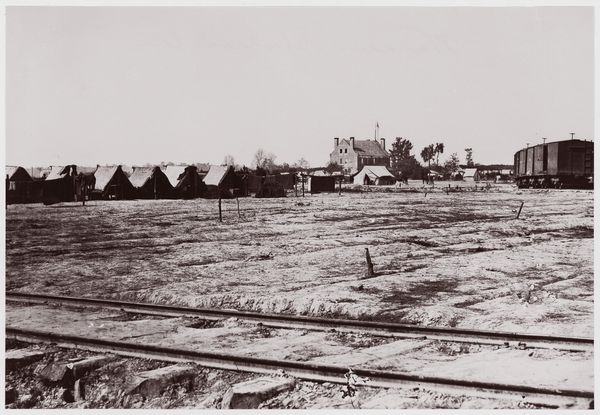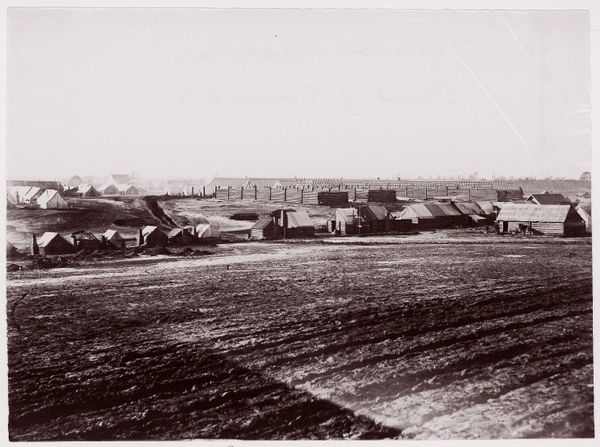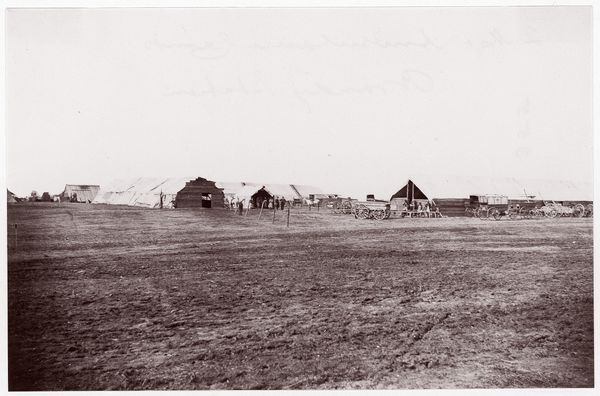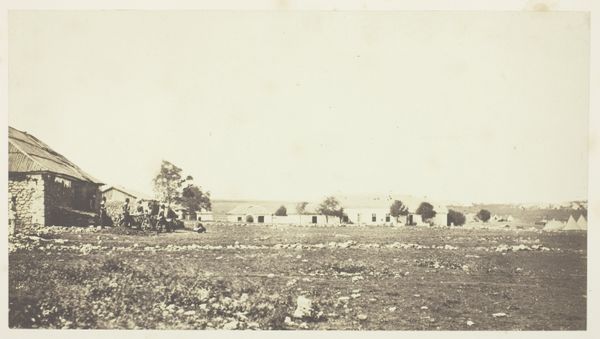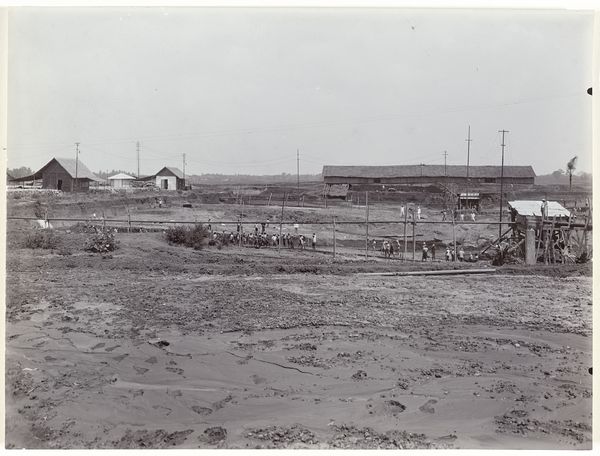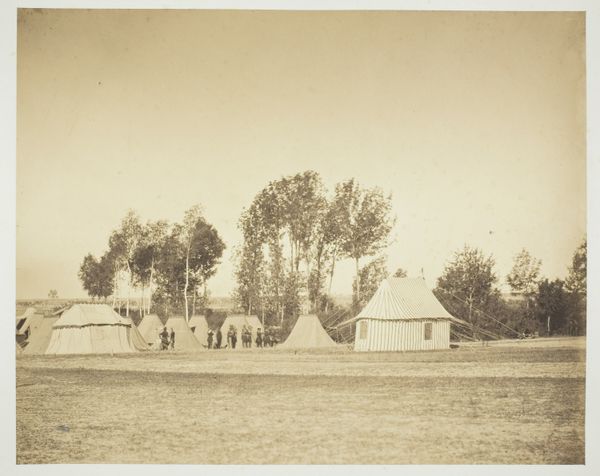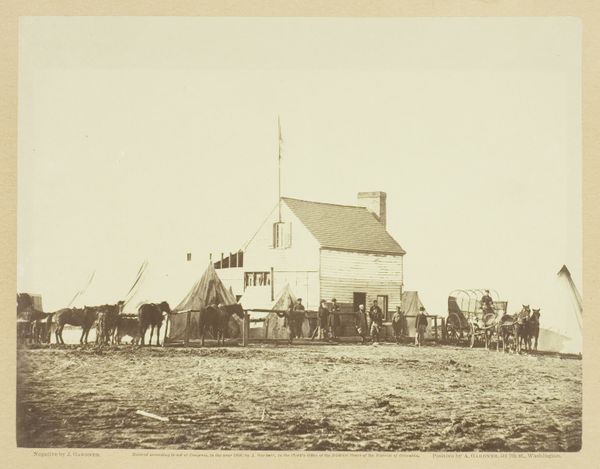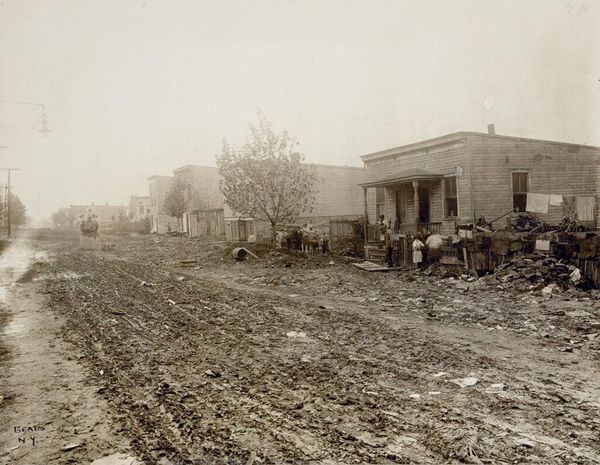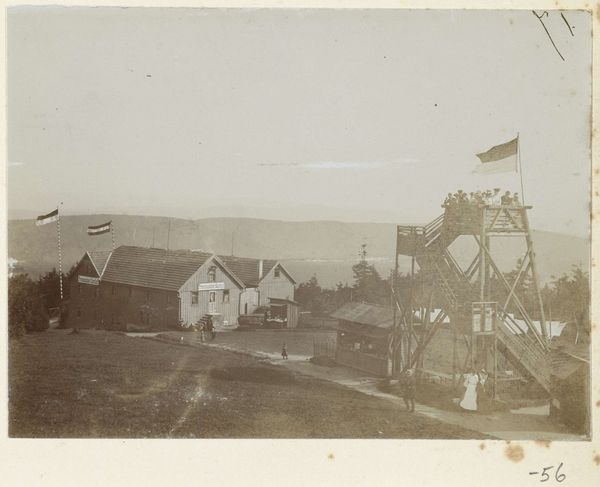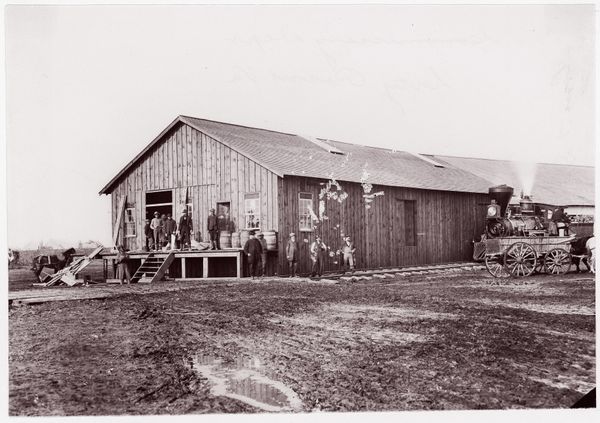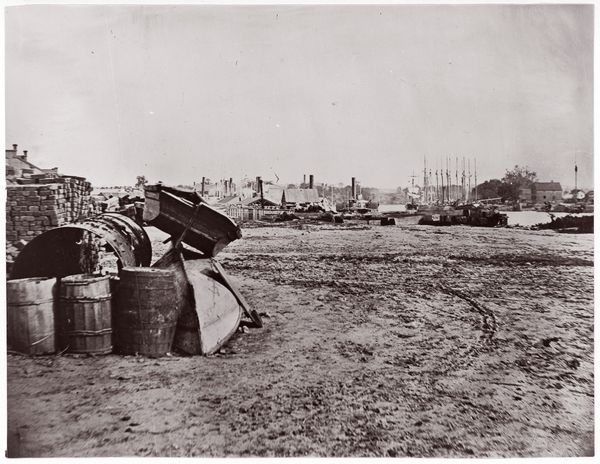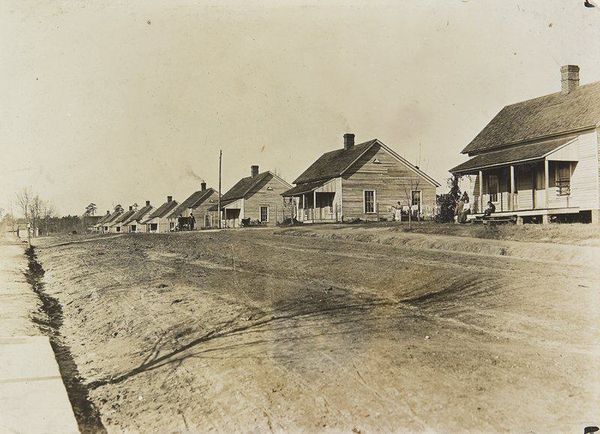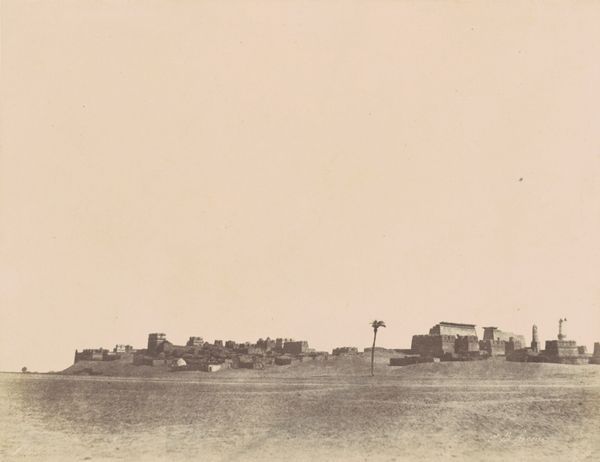![[Yellow House [also known as Yellow Tavern], Headquarters of the 6th Army Corps, Warren Station, in Front of Petersburg, Virginia] by Timothy O'Sullivan](/_next/image?url=https%3A%2F%2Fd2w8kbdekdi1gv.cloudfront.net%2FeyJidWNrZXQiOiAiYXJ0ZXJhLWltYWdlcy1idWNrZXQiLCAia2V5IjogImFydHdvcmtzLzUzNzViNWIyLTQ3NDQtNGU4Mi1hNjc0LTlmMWEzYTZiYjRlMS81Mzc1YjViMi00NzQ0LTRlODItYTY3NC05ZjFhM2E2YmI0ZTFfZnVsbC5qcGciLCAiZWRpdHMiOiB7InJlc2l6ZSI6IHsid2lkdGgiOiAxOTIwLCAiaGVpZ2h0IjogMTkyMCwgImZpdCI6ICJpbnNpZGUifX19&w=3840&q=75)
[Yellow House [also known as Yellow Tavern], Headquarters of the 6th Army Corps, Warren Station, in Front of Petersburg, Virginia] 1861 - 1865
0:00
0:00
photography, gelatin-silver-print
#
black and white photography
#
landscape
#
outdoor photograph
#
house
#
photography
#
gelatin-silver-print
#
monochrome photography
#
history-painting
#
realism
#
monochrome
Copyright: Public Domain
Curator: This gelatin-silver print, taken sometime between 1861 and 1865, is entitled "[Yellow House [also known as Yellow Tavern], Headquarters of the 6th Army Corps, Warren Station, in Front of Petersburg, Virginia]". The photographer was Timothy O'Sullivan. Editor: Stark. Utterly stark. It feels barren, like a stage set after the play’s finished, the actors gone. And that yellow house... it’s bleached of all color, practically disappears into the background. What kind of stories could those walls tell? Curator: O’Sullivan’s work is so compelling because it moves beyond the heroic narratives of war. While commissioned to document the conflict, his lens captured the human cost, the environmental devastation. Consider the image’s context: Petersburg was a vital railway hub and its siege one of the longest in US history. This “yellow house” wasn’t just a landmark; it was the strategic heart of the Union's Sixth Army Corps. Editor: It’s almost unnerving how ordinary the house looks given its place in history. The almost mundane tableau is disrupted by this intense feeling of emptiness. The figures seem so insignificant amidst all of that empty landscape; the human element shrinks. And is that supposed to be cheerful? The yellow seems to signify so many awful things. Curator: Exactly. The flatness of the composition, the near-absence of dramatic shadow, removes the romanticism often associated with depictions of war. O'Sullivan doesn’t judge; he presents. It invites us, or rather demands us, to question what's missing, and what power structures underpinned such a conflict. Who benefited? Who suffered? Editor: The photo almost resists easy interpretation, which I love. The bleak landscape pushes one to ask bigger questions; to see beyond the romantic and dive straight into the muck and the mire of it all. There is some poetic in seeing a house so seemingly small, which once played such a huge part of what came to pass. A lasting reminder, for all of us. Curator: Precisely, by moving past merely commemorating victory, O’Sullivan provides viewers with an enduring artifact prompting vital national conversations regarding memory, loss, and accountability. It leaves a chilling echo. Editor: An echo we still feel today, resonating through every crack and broken board of that yellow house.
Comments
No comments
Be the first to comment and join the conversation on the ultimate creative platform.
